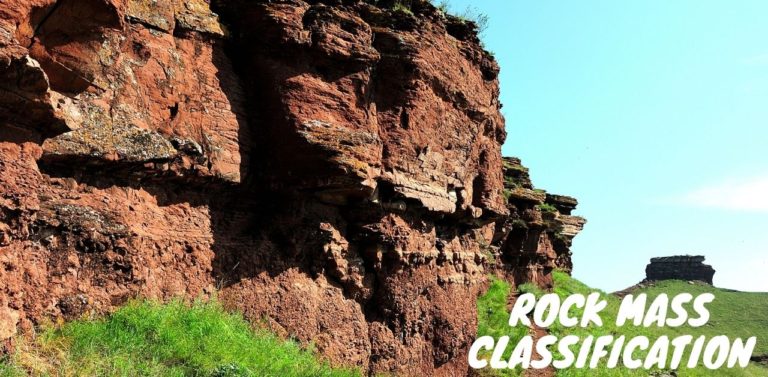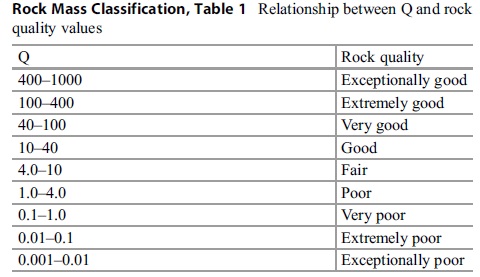Rock Mass Classification – RQD – RMR

What does Rock Mass Classification mean?
A classification system that captures all relevant information on the composition and characteristics of a rock mass to provide initial estimates of support requirements and to provide estimates of the strength and deformation properties of the rock mass (Rock Mass Classification – RQD – RMR).

One of the earliest classification systems for rock was developed by Terzaghi (1946). The classification system was developed as a method of classifying rock masses and evaluating rock loads based on qualitative assessments.
Rock-quality designation (RQD)
The rock-quality designation (RQD) developed by Dr. Don U. Deere (Deere and Deere 1988) is a method of logging sound drilled rock core to calculate and quantify the percentage of “good” rock in a core run. RQD is a quantitative method of evaluating rock quality and is widely used as one of the parameters in other more numerical rock classification systems.
RQD = Sum of length of core pieces 4 inches or greater
/ Total length of core run x 100%
Rock Mass Rating (RMR)
The Rock Mass Rating (RMR) system developed by Bieniawski (1989) and the Quality Index (Q) updated by Barton (2002) provide overall comprehensive indices of rock mass quality for the design and construction of excavations in rock.
The RMR system incorporates rock mass data regarding rock strength, RQD, discontinuity spacing, discontinuity condition, groundwater, and an adjustment for discontinuity orientation with respect to the excavation. These parameters are assigned numeric values based on their conditions and the summation of the numeric values for all the parameters is the rating of the rock mass.
Rock Mass Rating mobile application download
You can download the Rock Mass Rating application by clicking on the following photo.

The Quality Index (Q) uses parameters similar to the RMR system to evaluate the stability that can be expected for excavation within the rock mass. One of the differences between RMR and Q lies in the assessment of the in situ stress state in the Q system by use of the “Stress Reduction Factor.” The numerical value of the index Q varies on a logarithmic scale from 0.001 to a maximum of 1000 and is estimated from the following expression

where
Jn = joint set number
Jr = joint roughness number
Ja = joint alteration number
Jw = joint water reduction factor
SRF = stress reduction factor
The general relationship between Q and rock quality is provided in Table 1 below.
A new classification system, termed the Geotechnical Strength Index or GSI, Marinos et al. (2006), captures variability in geologic materials associated with faulting and extreme deformation associated with tunnels in rock. It is meant to provide reliable input data related to rock-mass properties required as input for numerical analysis or closed form solutions for designing tunnels.

